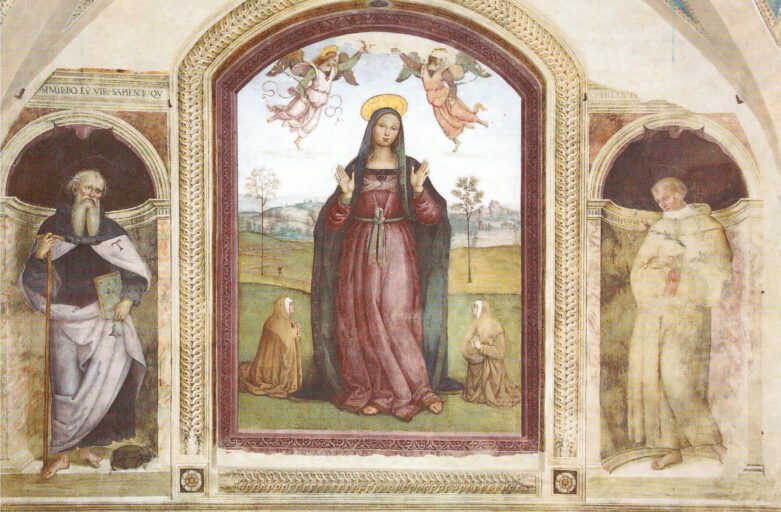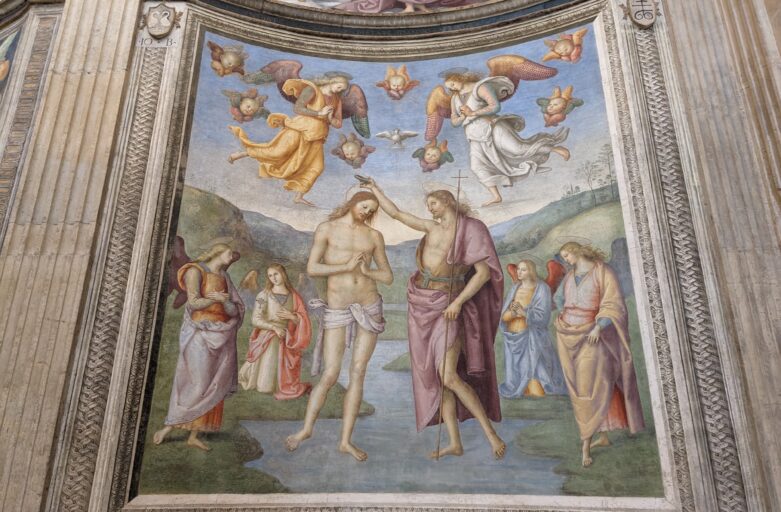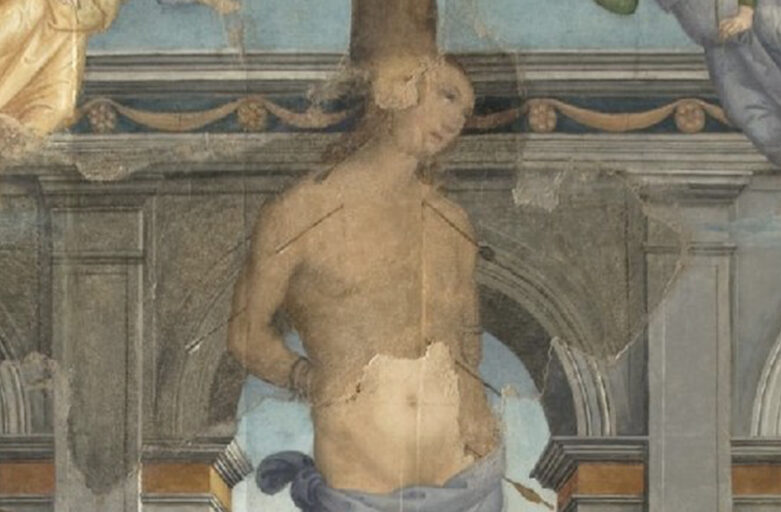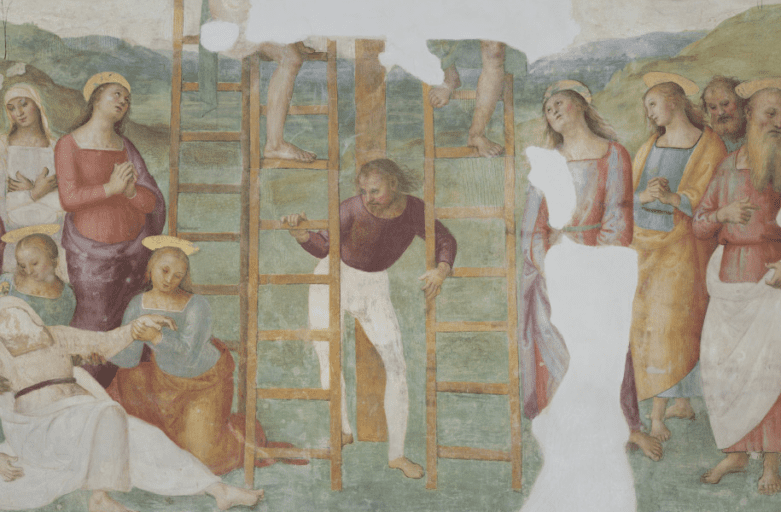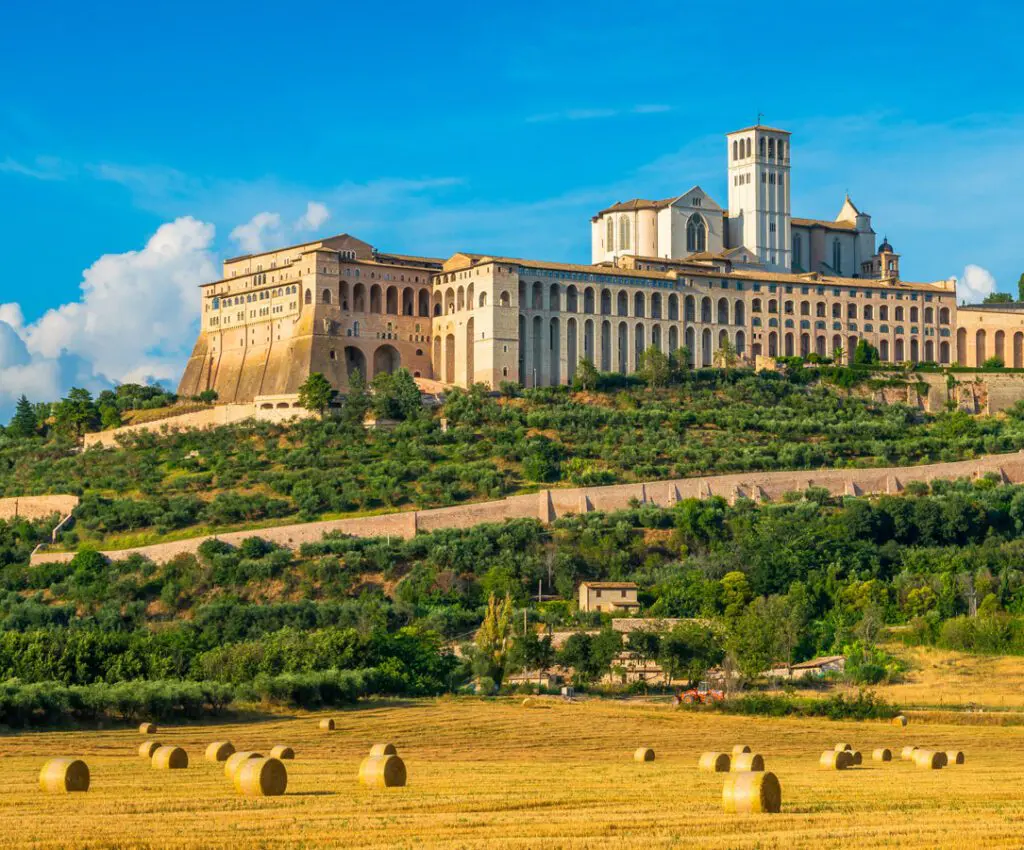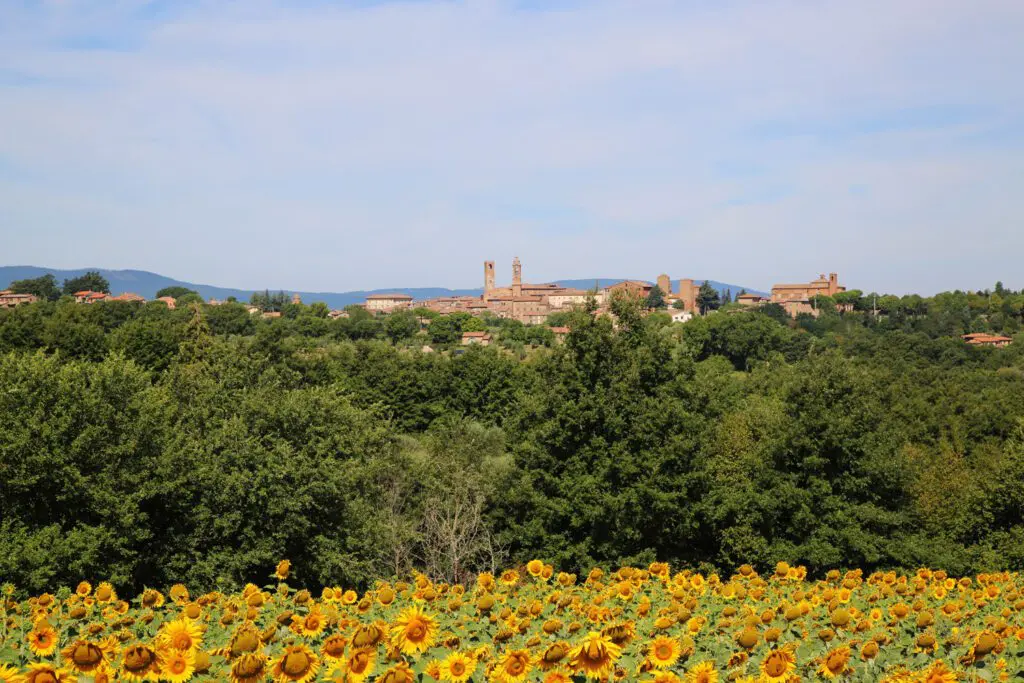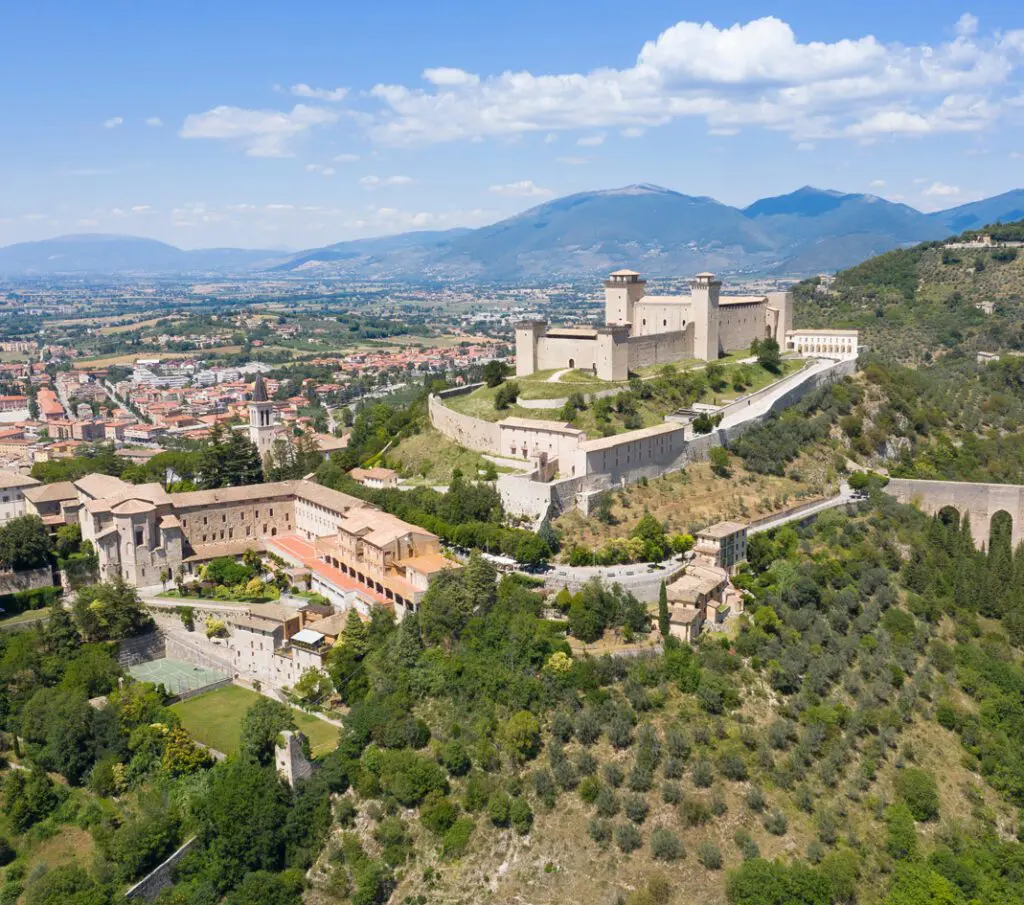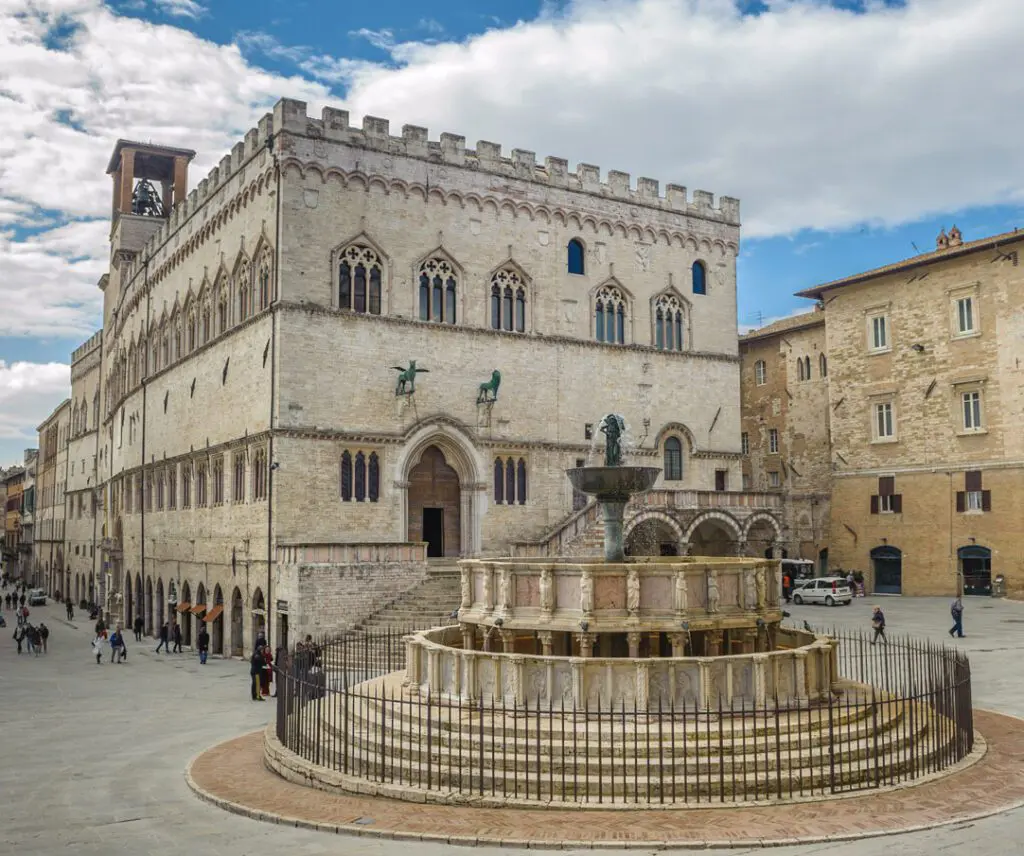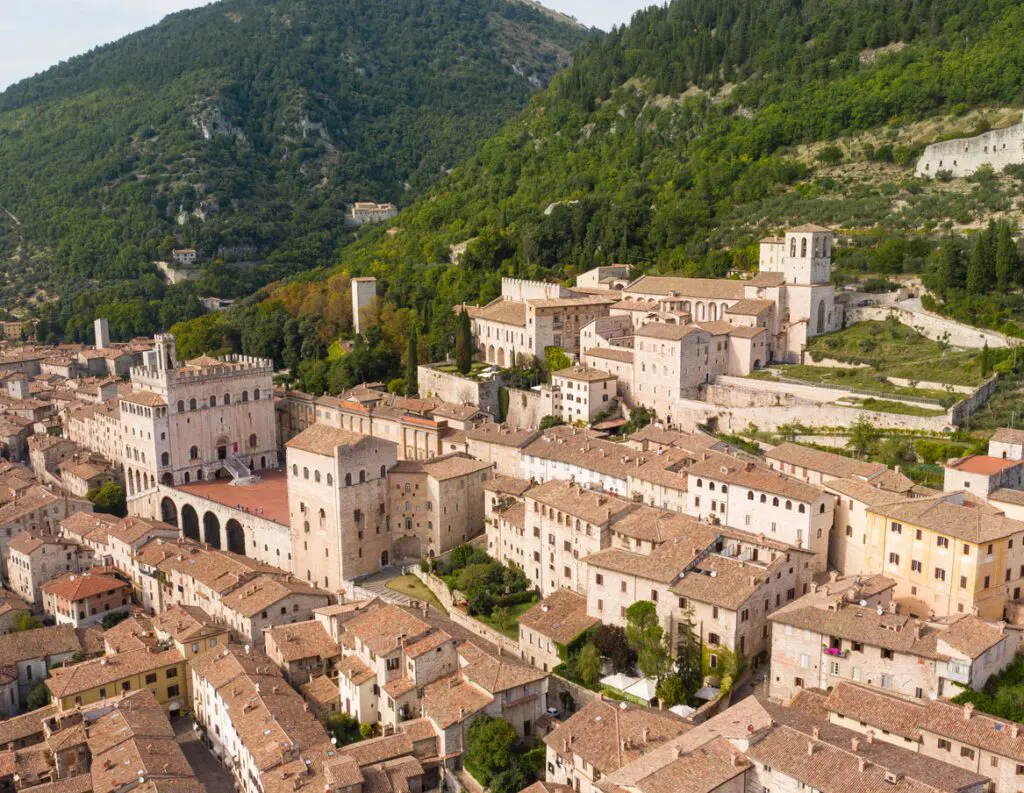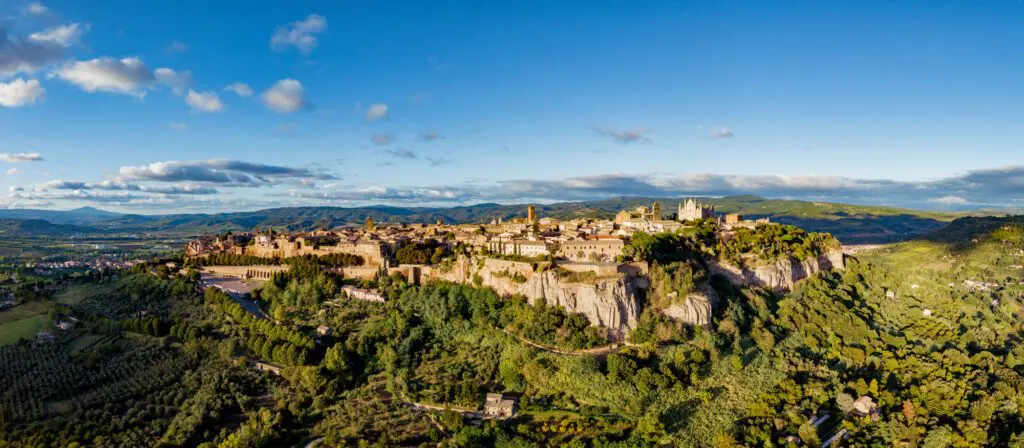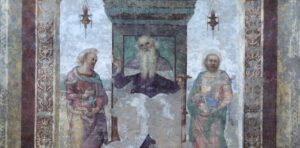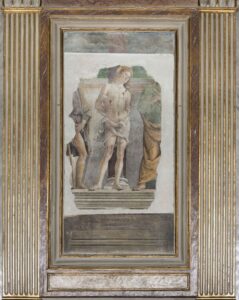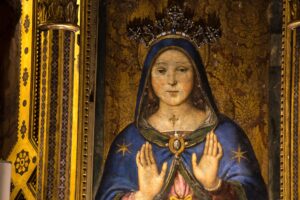Our Lady of Graces in Saint Agnes’ Monastery
In Perugia, in Saint Agnes’ Monastery, Perugino painted Our Lady of Graces with Saint Anthony Abbot (left) and Saint Anthony of Padua (right).
A closer look at the painting
Virgin Mary, standing in a beautiful Umbrian-like landscape, casts a sweet look at us – while two flying angels support her crown. She wears a rosy dress and a blue cloak, lined in green; a belt girds her waist and a thin, transparent veil covers her forehead. On both sides, in fake recesses, the Saints are shown as if they were statues.
Two kneeling nuns pray at Mary’s feet. They possibly are the Abbes of the monastery and her Vicar; or maybe, the very clients who paid for the fresco. Their very small size aim to stress the importance the main personage.
The central section of the painting imitates a window in the wall, through which the Saints – and we – admire Virgin Mary.
Our Lady of Graces in art history
The image of Our Lady of Graces appears in many places in Perugia. You will especially notice the one painted by Gian Nicola di Paolo, a pupil of Perugino, on a pillar in Saint Lawrence’s Cathedral. This pattern comes from Byzantine art: the so-called Virgin Blacherniotissa, easy to identify because of her open hands, palms turning outward toward us; and her long cloak.
Below the painting, an inscription displays some names, still partly readable. They probably were the clients’ names.
The work’s date
Perugino’s painting was formerly ascribed to 1522. The 2004 restoration, however, revealed the high quality of the characters’ faces, thus making scholars rethink the time period of its making. According to the current conjecture, it should have been painted a decade earlier.
After the National Unification of Italy (1861) the monastery was suppressed by the lay authorities, and became a property of the State. Later on, anyway, it would have caused troubles to let the nuns come back here – as their seclusion would make it impossible for the people to admire the fresco, whose beauty was well known by now. Therefore the Bishop of Perugia, i.e. the later Pope Leo XIII, abolished the seclusion with reference to the chapel in which the fresco exists, and visitors have free access to it.
Discover the testimonies of Perugino today
Routes and itineraries to discover the works of the divine painter
